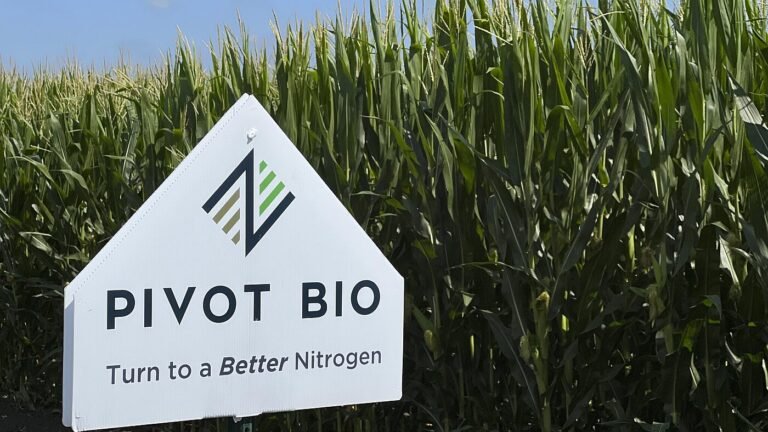
Finnish startup Enifer has teamed up with Brazilian ethanol giant FS to produce mycoprotein for aquaculture and petfood using thin stillage—a side stream from corn ethanol production—as a feedstock.
Enifer, which is currently building a 3,000-tons-a-year plant for its PEKILO-branded mycoprotein in Kirkkonummi, Finland, is working with FS to construct a 500-ton pilot scale facility in Brazil backed by R$9.8 million ($1.7 million) from Brazilian innovation agency FINEP.
The mycoprotein will be marketed to the animal nutrition industry in Brazil, Ecuador, and Chile.
If the pilot is a success, a scaled up industrial plant could make 10,000 tons of PEKILO a year, making it a significant new source of sustainable protein in Latin America, said Enifer cofounder and CEO Simo Ellilä.
“Transferring this process across the Atlantic to a new continent and using a new agricultural side stream is a significant validation of the flexibility and robustness of the PEKILO fermentation technology.”
“With this funding, we will advance key stages related to fungal fermentation, enabling us to move toward industrial production,” added Daniel Lopes, VP of Sustainability and Business Development at FS. “We will now implement our pilot plant, learn how to scale its operation and test the market with high-performance functional solutions for animal nutrition.”
Proven at industrial scale
PEKILO mycoprotein was in commercial production from 1975 to 1991 as a source of feed for pigs and chickens. It is produced by the fungal strain Paecilomyces variotii KCL-24, which was historically fed with spent sulfite liquor, a byproduct of paper making.
Enifer—which was spun out from the VTT Technical Research Centre of Finland in 2020—has upgraded the process to work with a broader range of feedstocks.
A protein- and fiber-rich powder with a neutral taste and color that can be shipped at room temperature, PEKILO is initially being targeted at pet food and aquaculture. This will be followed by human food applications from meat and dairy alternatives to snack bars, says the firm, which has recently filed for Novel Food approval in Europe and is pursuing GRAS status in the US.
‘The PEKILO process offers an alternative, higher value route to valorizing thin stillage’
Following corn ethanol distillation, byproducts are separated into thin stillage (the liquid portion) and wet distillers grains (the solid portion).
Typically, the wet grains are dried to produce DDS (Dried Distillers Grains) for animal feed, while the thin stillage can be partially recycled back into the fermentation process or evaporated to produce a corn syrup concentrate that can be added to DDS to create DDGS (Dried Distillers Grains with Solubles).
“In essence, this is just a way to get rid of thin stillage, which contains lots of nutritionally ‘worthless’ compounds such as glycerol,” Enifer CEO Simo Ellilä told AgFunderNews. “In the process, the protein content of DDG is actually diluted when making DDGS.
“The PEKILO process offers an alternative, higher value route to valorizing thin stillage. You actually convert the problem—glycerol—into more protein, and specifically into high concentration protein,” added Ellilä, who has been working with FS since 2021.
“As to why we’re starting at pilot scale and not industrial scale, there are many reasons. On the one hand it’s a feedstock and integration question: we need to validate the best way to integrate the PEKILO process in the context of a corn dry grind plant before scaling up. It’s a technology transfer question – the people in Brazil need to learn the ropes. And it’s a market question: local offtake needs to be built.”
“We are adding extra value to second-crop corn by developing a relevant and innovative solution for animal nutrition, using a pre-existing raw material without compromising DDG production. This is a significant technological advancement for the sector.” Rafael Abud, CEO, FS
Feedstocks
Asked how thin stillage compares to other feedstocks that Enifer’s fungi strain can eat, such as molasses (a byproduct of sugar refining) and lactose permeate (a byproduct of dairy protein production), Ellilä said: “Each feedstock is slightly different and has its pros and cons.
“Knowing how to work with lots of different feedstocks is really core to Enifer’s know-how. Over the years we’ve tested close to 100 different feedstock samples. Thin stillage is an exceptionally rich feedstock, so it needs very little in terms of added nutrients such as phosphorus or potassium. On the other hand, there are some specific issues related to its handling e.g. solids and corn oil that need to be tackled.”
As for the timetable, he said, “It’s too early to discuss offtakes, but FS has good local networks thanks to its existing feed protein offering and has also done extensive testing locally. We’re sharing a lot of learnings we’ve had in Europe, but of course Latin America is a very different market with different consumer priorities.”

Commercial interest
When it comes to commercial interest, Enifer is “offering a new ingredient that will not only deliver protein, but help producers and brands meet their own strategic goals,” claimed Ellilä. “These can be meeting their own carbon footprint reduction goals, to innovation targets and even new health claims.
“In some cases, because of the technical nature of PEKILOPet, it can replace other ingredients as a cost saving exercise. Our participation at ZooMark earlier this month underlined the interest in our ingredient even further, with several new development projects being initiated.”
He added: “We certainly have LOIs (letters of intent) in place, but many of our current commercial partners may not want others to know they are formulating with PEKILOPet at this time. We think that Interzoo 2026 [a leading trade fair for the pet industry] will demonstrate the reach of our ingredient with brands making their launch at that event. It is safe to say that once we start ramping up production next year, the product will have clear destinations.”

The post Enifer partners with ethanol giant FS for mycoprotein production in Brazil appeared first on AgFunderNews.


